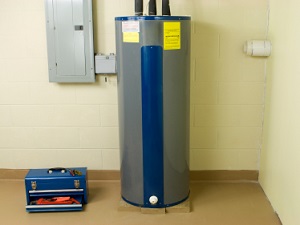Expert Tips on Caring for Your Home's Hot Water System
Expert Tips on Caring for Your Home's Hot Water System
Blog Article
The author is making a number of great observations relating to Tips on Maintaining a Water Heater in general in this content below.

Warm water is vital for daily convenience, whether it's for a rejuvenating shower or washing recipes. To ensure your hot water system runs successfully and lasts longer, regular upkeep is crucial. This short article provides sensible ideas and insights on just how to preserve your home's hot water system to stay clear of interruptions and costly fixings.
Introduction
Maintaining your home's warm water system could seem daunting, yet with a few straightforward actions, you can ensure it operates efficiently for many years to come. This guide covers every little thing from understanding your warm water system to do it yourself upkeep suggestions and recognizing when to call expert help.
Relevance of Preserving Your Hot Water System
Routine maintenance not just prolongs the life-span of your warm water system yet likewise ensures it runs effectively. Neglecting upkeep can lead to reduced performance, greater energy costs, and even early failure of the system.
Indications Your Hot Water System Demands Maintenance
Knowing when your hot water system requires interest can protect against significant issues. Keep an eye out for signs such as irregular water temperature, unusual noises from the heater, or rusty water.
Understanding Your Hot Water System
Prior to diving right into maintenance tasks, it's handy to comprehend the standard elements of your warm water system. Usually, this consists of the water heater itself, pipelines, anode poles, and temperature controls.
Monthly Maintenance Tasks
Normal regular monthly checks can aid catch minor problems before they rise.
Flushing the Water Heater
Flushing your water heater eliminates sediment accumulation, enhancing effectiveness and extending its life.
Monitoring and Changing Anode Rods
Anode poles stop deterioration inside the container. Evaluating and changing them when broken is crucial.
Evaluating and Readjusting Temperature Level Setups
Changing the temperature level settings guarantees optimal efficiency and safety and security.
Do It Yourself Tips for Upkeep
You can do a number of maintenance tasks on your own to maintain your warm water system in top condition.
Checking for Leaks
Routinely examine pipelines and links for leakages, as these can cause water damage and higher costs.
Examining Stress Alleviation Valves
Checking the pressure relief valve guarantees it operates properly and avoids excessive pressure build-up.
Shielding Pipes
Insulating warm water pipelines decreases heat loss and can save power.
When to Call an Expert
While DIY upkeep is valuable, some problems require specialist knowledge.
Complex Concerns Needing Professional Aid
Examples consist of major leaks, electric issues, or if your water heater is continually underperforming.
Routine Professional Upkeep Benefits
Specialist maintenance can include extensive evaluations, tune-ups, and ensuring conformity with security requirements.
Conclusion
Routine maintenance of your home's warm water system is important for performance, durability, and price financial savings. By complying with these tips and understanding when to seek expert help, you can make sure a dependable supply of warm water without unexpected disturbances.
How to Maintain an Instant Hot Water Heater
Before tinkering with your hot water heater, make sure that it’s not powered on. You also have to turn off the main circuit breaker and shut off the main gas line to prevent accidents. Also turn off the water valves connected to your unit to prevent water from flowing into and out of the appliance. 2. When you’re done, you have to detach the purge valves’ caps. These look like the letter “T†and are situated on either side of the water valves. Doing so will release any pressure that has accumulated inside the valves while at the same time avoid hot water from shooting out and burning your skin. 3. When the purge valves’ caps are removed, you have to connect your hosing lines to the valves. Your unit should have come with three hoses but if it didn’t, you can purchase these things from any hardware or home repair shops. You can also get them from retail stores that sell water heating systems. Read the user’s manual and follow it to complete this task properly. When the hosing lines are connected, open the purge port’s valves. 4. You should never use harsh chemical cleaners or solutions when cleaning your unit. Make use of white vinegar instead. It should be undiluted and you’ll probably use about 2 gallons. 5. Now flush your water heater. This task should probably take about 40 minutes. We can’t give you specific directions for this because the procedure is carried out depending on the type, model and brand of your heater. With that being said, refer to the user’s manual. 6. When you’re done draining the unit, you have to turn off the purge port valves again. Remove the hosing lines that you earlier installed on each of the water valves. Put the valve caps (purge port) back in their respective places and be very careful so as not to damage the rubber discs that are found inside these caps. 7. Now that everything’s back in place, check your user’s manual again to find out how to reactivate your water heating system. 8. Once it is working, turn one of your hot water faucets on just to let air pass through the heater’s water supply pipes. Leave the tap on until water flows smoothly out of it. https://www.orrplumbing.com/blog/2014/september/how-to-maintain-an-instant-hot-water-heater/

We had been brought to that editorial about Tips For Maintaining Your Hot Water Heater through someone on our other site. Appreciated our blog posting? Please quickly share it. Help another person find it. I appreciate your readership.
Click Here Report this page